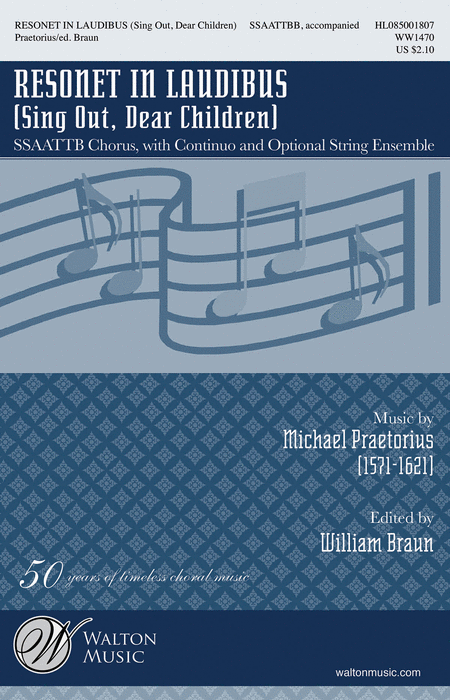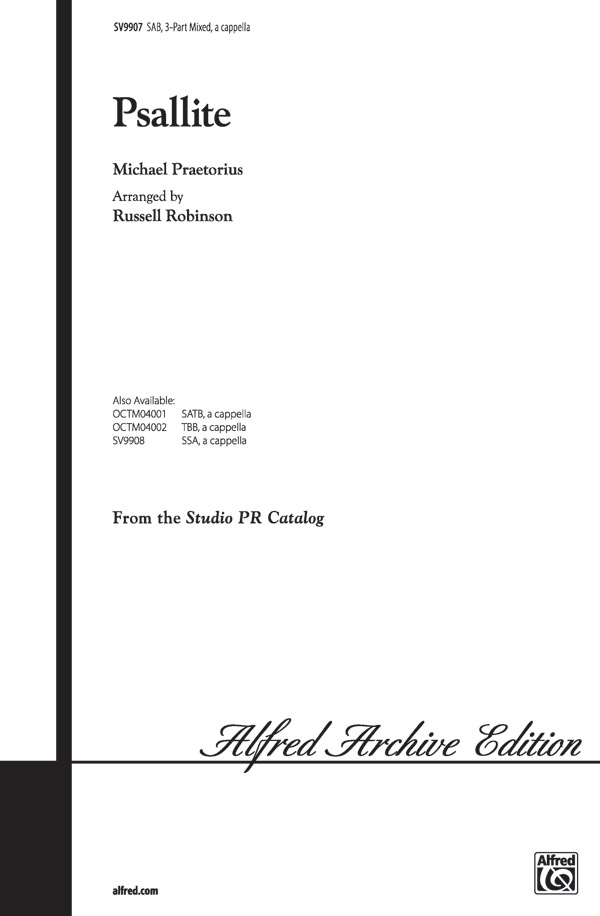In Celebration of the Human Voice - The Essential Musical Instrument
Home | Doo Wop | Barbershop | World | Contemporary | Christian | Vocal Jazz | Choral | Christmas | Instructional | Arrangements
Classical | Opera | Musicals | Personality | Young Singers | Disney | Videos | Songs | The Artists

Michael Praetorius

Michael Praetorius was the son of Michael Schultze (Praetorius being a Latinization of the name). At an early age Praetorius attended the University of Frankfurt a. O., his brother supporting him. When his brother died, Praetorius became organist at Frankfurt and later held the same post at Luneburg. In this latter town Pratorius began his career as Kapellmeieter. In 1604 he entered the service of the Duke of Brunswick at Wolfenbuttel, first as organist, later as "kapellmeister" and secretary. He was appointed honorary prior of the Ringelheim Monastery near Goslar, but without compulsion to reside there. Praetorius had become famous as composer of church music, among which should be mentioned the mammoth edition of over twelve hundred songs. He began to write a complete encyclopedia of the art and practice of music, of which he finished three volumes with the title Syntagma Musicum. The second volume of this work is the most elaborate and valuable of all treatises on instruments and instrumental music in the 16th century. It is considered one of the most remarkable examples of musical scholarship in existance. Among his other titles were Musae Sioniae published in nine parts and Hymnodia Sionae. He ranks high as a writer and also as a composer of church melodies. |
Displaying 1-12 of 12 items.
From Praetorius' Musae Sioniae of 1609, this charming Christmas partsong celebrates the Nativity with a simple verse/refrain structure. Ideal for developing the imitative vocal style of the Renaissance, it offers opportunities for displaying crisp diction and sharp dynamic contrasts. Duration: ca. 1:20.
How best to describe this setting? It's Praetorius with jazz chords, and every time we've heard it sung, singers and listeners alike tend to break into a bit of a Mona Lisa-esque smile of approval. Best sung unaccompanied if your choir has good intonation.
Arranger: Rosemary Campbell
This edition of the work from the early 1600s offers great versatility for the singers. The SSAATTB setting for young choirs and beyond allows the treble parts to be sung by soloists or a smaller mixed choir. Instruments may also be substituted for voices. For a bigger performance, you may combine several choirs and add optional strings to the continuo. Available separately: SSAATTB, Instrumental Accompaniment (Score and Parts for Strings). Duration: ca. 4:00.
This well-known song by Praetorius from the German Renaissance period has long been a part of our choral repertoire. Russell Robinson has created an easy-to-sing SATB setting as well as a three-part men's edition. A perfect way to present standard choral repertoire to your developing choirs.
Arranger: Russell Robinson
![]() Vocal Harmony Arrangements - Home
Vocal Harmony Arrangements - Home
Christian | Gospel | Standards | Musicals | Specialty | World | Barbershop | Contemporary | Vocal Jazz | Choral | Christmas
Mixed Voices | Female | Male | 8 Parts | 6 Parts | 5 Parts | 3 Parts | 2 Parts | Medleys | Solo | Folio Series | New Releases
Select a Category |
Want to Sing? - Find a Chorus Near You
List of Choruses by State | List of Choruses by City









